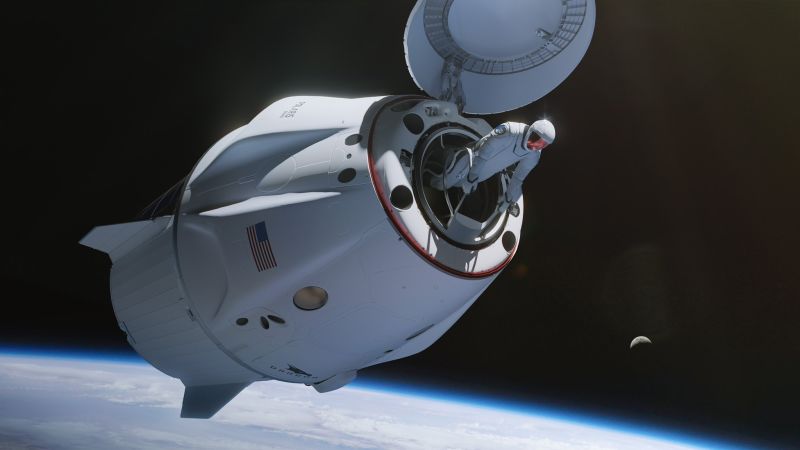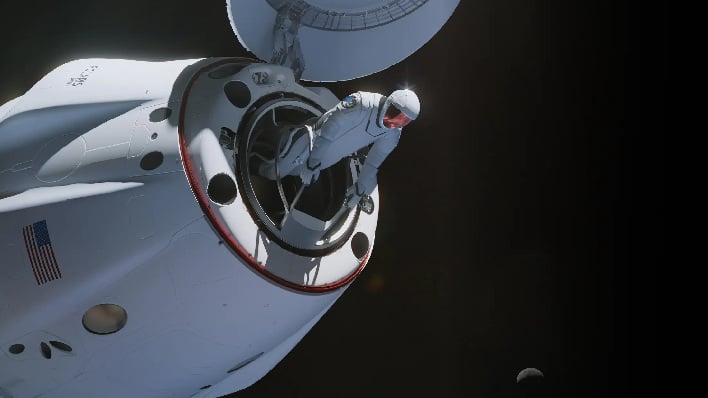Jared Isaacman is set to go on another space mission, Polaris Dawn, scheduled to launch on August 26, 2024. The crew for this mission includes Isaacman, his close friend and former Air Force pilot Scott Kidd Poteet and two SpaceX engineers, Anna Menon and Sarah Gillis.

Also Read: Researchers Discover Two Key Phases of Rapid Aging at 44 and 60
The Polaris Dawn mission is the first of three planned flights under the Polaris Program financed by billionaire Jared Isaacman, who also serves as the mission commander.
This mission will be the second spaceflight for Isaacman following the successful Inspiration4 mission in 2021.
The mission will be piloted by Scott Poteet with Anna Menon and Sarah Gillis, two SpaceX engineers serving as the medical officer and mission specialist.
Polaris Dawn is planned as a five-day mission during which the crew will fly in a free-orbit trajectory around Earth. They aim to reach an altitude of 1,400 kilometers, which is the highest a human crew has ventured in over 50 years.
While all four crew members will be exposed to the vacuum of space, Jared Isaacman and Sarah Gillis will be the ones to step outside the Dragon spacecraft. Scott Poteet and Anna Menon will provide support from within the capsule.
The spacewalk is expected to last around two hours. The objective is to test SpaceX’s new EVA suits, gather data and refine suit design for future missions such as those planned for the Moon and Mars.
The five-day mission will take the crew aboard a SpaceX Crew Dragon capsule to altitudes higher than any human has traveled since NASA’s Apollo program ended in the 1970s.
Their orbital path will reach into Earth’s Van Allen radiation belts, areas with high concentrations of radiation that present additional dangers.
A key aspect of the mission is the spacewalk, where the crew will expose themselves to the vacuum of space, a feat that has never been attempted by non-government astronauts.
The astronauts will rely on newly developed Extra-Vehicular Activity (EVA) suits by SpaceX, which were created in just two and a half years.
Isaacman aims to advance space technology by funding and personally participating in the testing of new hardware.
Garrett Reisman, a former NASA astronaut and SpaceX consultant highlights that Isaacman’s mission is not a mere joyride but a crucial step in advancing SpaceX’s capabilities and technology.
Polaris Dawn is the first of three missions under the Polaris Program, which Isaacman is funding and executing alongside SpaceX.
Although the cost of the mission remains undisclosed, the program’s goal is to validate the technology that will be essential for deep space exploration.
The mission will test spacesuits, EVA and life-support technologies, all of which are critical for the future of human space travel.
Also Read: New Research Reveals Stonehenge Megalith Originating from Scotland, Not Wales
The mission involves traveling into an oval-shaped orbit that extends as high as 870 miles (1,400 kilometers) from Earth, well within the Van Allen radiation belts.
Upon reaching space the crew will undergo a pre-breathe process to prepare for the spacewalk similar to what scuba divers do to avoid decompression sickness.
The process involves purging nitrogen from their blood, will take nearly two days and is more complex than anything attempted on the International Space Station (ISS).
On the third day of the mission, the crew will open the Crew Dragon’s hatch at an altitude of 435 miles (700 kilometers) above Earth.
Only Isaacman and Gillis will exit the spacecraft, tethered to the vehicle by umbilicals, while the entire spacecraft’s interior will be exposed to space.
This mission carries more risks than other private orbital missions such as those that have carried customers to the ISS.
Day 1: The mission will begin with a launch from Florida targeting a time when the risk from micrometeorites is minimal. Once in orbit, the crew will perform checks of the Dragon capsule named Resilience to ensure it is functioning perfectly before ascending to their target altitude.
Day 2: The second day will focus on conducting scientific experiments. The crew has planned around 40 different experiments to perform, which will provide data for future space missions. Additionally they will prepare for the spacewalk by testing the new EVA suits in microgravity conditions.
Day 3: This is the most important day of the mission. Isaacman and Gillis will step outside the spacecraft, while Poteet and Menon monitor and support the activity from inside. The spacewalk will test the EVA suits and also gather data on human performance in extreme environments.
Day 4: After the spacewalk, the crew will analyze the data collected during the EVA and continue with the scientific experiments. This day will be for understanding how the suits performed and what improvements might be needed.
Day 5: The final day will involve preparing for re-entry and landing. The crew will conduct final checks of the spacecraft and suit up for the return to Earth. Once the mission is complete, the data and experiences gathered will be thoroughly analyzed to inform future missions.
Also Read: Mars: Scientists Find Liquid Water Reservoir Under Martian Crust























